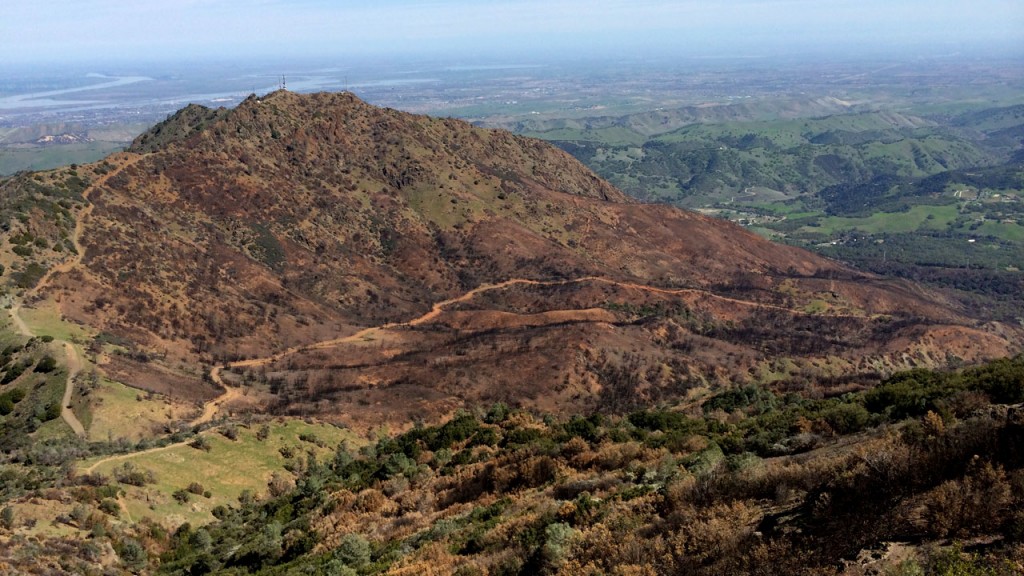
Mt. Diablo State Park is making a gradual recovery after the Morgan Fire burned more than 3,000 acres in the area last September. A citizen science group is asking local hikers to help document that recovery with their smartphones.
A huge burned swath still covers one side of the mountain, but green shoots are starting to come through.
“Things are starting to grow especially now that we’ve that little bit of rain,” says Dan Rademacher, a co-founder of Nerds for Nature.
The all-volunteer group blends technology and the outdoors through projects like using drones to document biodiversity in Lake Merritt. They’ve posted a series of signs along Mt. Diablo’s Summit Trail, designed to turn hikers into citizen scientists.
“I’ve been taking pictures,” says hiker Celia Mason of Danville, coming across the signs. “I came up here right up here after the fire and was just devastated.”

The signs have an L-shaped bracket where hikers can place their smartphones to snap a picture. That way all the photos of the burned area are taken from the same angle. Then, they upload the photos to Flickr, Twitter or Instagram with a special hashtag.
